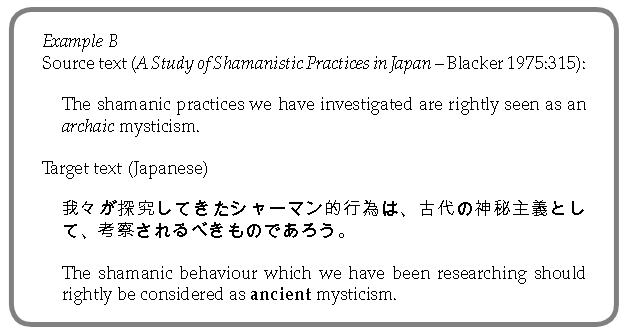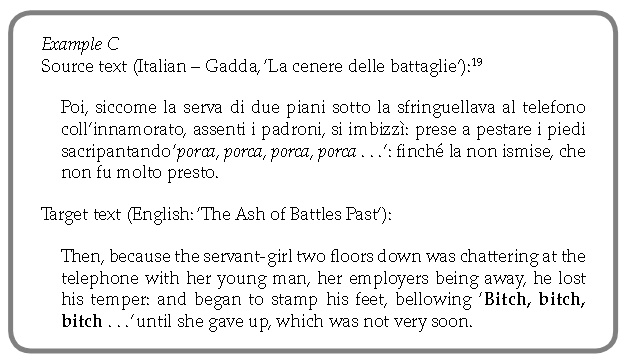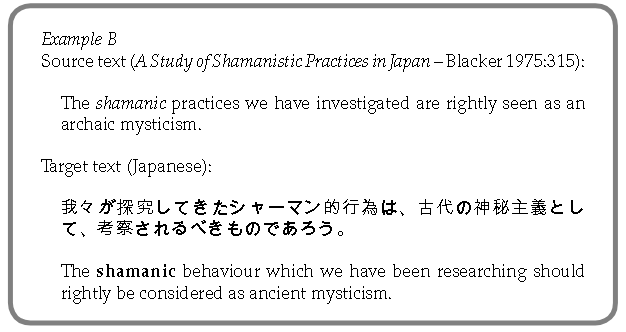This is your very first post. Click the Edit link to modify or delete it, or start a new post. If you like, use this post to tell readers why you started this blog and what you plan to do with it.

For better satisfaction
This is your very first post. Click the Edit link to modify or delete it, or start a new post. If you like, use this post to tell readers why you started this blog and what you plan to do with it.

These are few items or strategies that usually used:
(a) Translation by a more general word (superordinate) This is one of the commonest strategies for dealing with many types of non equivalence, particularly in the area of propositional meaning.

The preceding examples illustrate the use of a general word (superordinate) to overcome a relative lack of specifi city in the target language compared to the source language.
(b) Translation by a more neutral/less expressive word

(c) Translation by cultural substitution
This method involves replacing a culturally specific item or expression with a target-language item that does not have the same propositional meaning but is likely to have a similar impact on the target reader, such as by evoking a similar context in the target culture. The main benefit of applying this strategy is that it provides the reader with a concept with which he or she can identify, something familiar and appealing. This strategy is employed based on:
(1). How much licence is given to the translator by those who commission the translation.
(2). The purpose of the translation.
(3). The translator’s own judgement of the desirability or otherwise of obscuring the cultural specificity of the source text.

(d) Translation using a loan word or loan word plus explanation
This approach is especially common when dealing with culturally specific items, modern concepts, and buzzwords.When the loan word is repeated several times in the text, it is very helpful to follow it with an explanation.Once explained, the loan word can be used on its own; the reader understands it without being distracted by additional lengthy explanations.

Shaman is a technical word used in religious studies to refer to a priest or a priest doctor among the northern tribes of Asia. It has no ready equivalent in Japanese. The equivalent used in the translation is made up of shaman as a loan word, written in katakana script (the script commonly used to transcribe foreign words into Japanese), plus a Japanese suffix which means ‘like’ to replace the -ic ending in English.
(e) Translation by paraphrase using a related words
When the concept expressed by the source item is lexicalized in the target language but in a different form, and when the frequency with which a particular form is used in the source text is significantly higher than would be natural in the target language, this strategy is used.

(f) Translation by paraphrase using unrelated words
Even if the concept expressed by the source item is not lexicalized in the target language, the paraphrase strategy can still be used in some situations. Instead of a related word, the paraphrase could be based on modifying a superordinate or simply unpacking the meaning of the source item, especially if the source item is semantically complex.

The main advantage of the paraphrase strategy is that it achieves high precision in specifying propositional meaning. One disadvantage is that a paraphrase lacks the status of a lexical item and thus cannot convey expressive, evoked, or associative meaning. Another disadvantage of this strategy is that it is time-consuming and awkward to use because it requires filling a one-item slot with a multi-item explanation.
(g) Translation by omission
This strategy may appear drastic, but in some cases, not translating a word or expression is beneficial. If the meaning conveyed by a specific item or expression is not important enough to the development of the text to warrant distracting the reader with lengthy explanations, translators can, and frequently do, simply omit translating the word or expression in question.

When words and expressions are omitted in a translation, there is inevitably some loss of meaning. As a result, it is best to use this strategy only as a last resort, when the benefits of producing a smooth, readable translation clearly outweigh the value of accurately rendering a specific meaning in a given context.